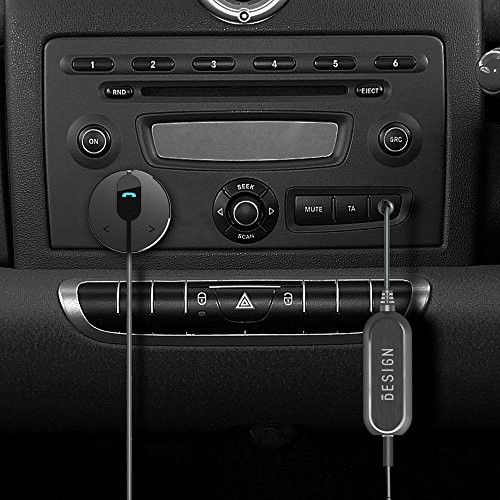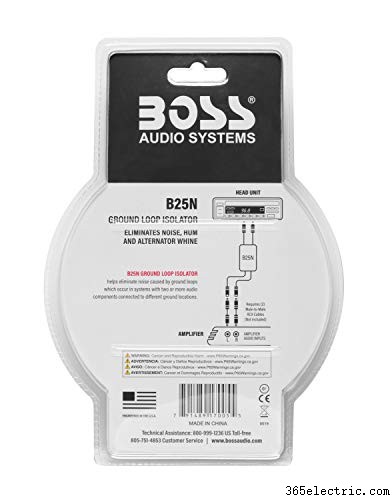Come installare un filtro antirumore sull'autoradio?
Se desideri ridurre la quantità di rumore che passa attraverso l'autoradio, puoi installare un filtro antirumore.
Un filtro antirumore è un semplice dispositivo che va tra lo stereo e gli altoparlanti e aiuta a ridurre l'elettricità statica e altre forme di interferenza, ma come si installa un filtro antirumore nell'auto? Scopriamolo.
Per installare un filtro antirumore, rimuovere l'autoradio e collegare il filtro antirumore all'alimentazione e al cavo della batteria. Alcuni filtri antirumore hanno anche un filo di terra che deve essere collegato allo chassis dietro lo stereo. Dopo aver collegato il filtro antirumore, reinstalla l'autoradio e provala.
In questo articolo, ti mostrerò come installare un filtro antirumore sull'autoradio per ridurre l'elettricità statica e altre forme di interferenza.
Come faccio a installare un filtro antirumore nella mia auto?
Il primo passo è scegliere il tipo di filtro antirumore più appropriato per il tuo veicolo. Esistono due diversi tipi di filtri antirumore popolari, ed entrambi potrebbero richiedere configurazioni diverse.
Il primo tipo di isolatore audio è semplicissimo da installare nel tuo veicolo e non è necessaria alcuna configurazione aggiuntiva. È piccolo e nero e sembra un po' come una batteria. Deve essere collegato tra l'autoradio e qualsiasi dispositivo tu stia utilizzando per riprodurre la musica, che si tratti di un telefono o di un altoparlante. Questo è letteralmente tutto ciò che deve essere fatto. Abbastanza facile!
Se ascolti musica dal telefono come faccio spesso, potresti dover utilizzare Besign Noise Isolator . Lo sto usando come filtro aggiuntivo e non ho problemi con i suoni strani.
Il filtro antirumore Besign è davvero economico e funziona bene per il suo prezzo.

Il secondo tipo di filtro antirumore è un po' più complicato da installare e può differire tra i diversi modelli di auto, quindi assicurati di avere a portata di mano il tuo manuale.
Questi filtri sono dotati di fili rossi, blu e neri. I fili rosso e blu si collegano al filo di accensione che si trova all'interno dell'autoradio, mentre il nero si collega al filo di terra. E il gioco è fatto, un suono cristallino!
Un filtro antirumore che secondo me è il migliore e può essere installato in modo permanente nel veicolo, e io consiglio, è il Filtro antirumore BOSS Audio Systems B25N . È particolarmente utile se hai installato un amplificatore o una connessione a terra debole.
Sebbene richieda un po' più di cablaggio e sia un po' più costoso, la sua installazione è facile e i risultati sono ottimi. Ho già aggiunto un filtro Boss alla mia auto e tutti i rumori strani sono scomparsi. È disponibile anche su Amazon e se desideri eliminare per sempre i suoni fastidiosi, fai clic sul link sopra e controlla il prezzo più recente.

La funzione di un filtro antirumore è abbastanza semplice. Sono disponibili in una varietà di forme e forme diverse e alcuni richiedono metodi di installazione diversi. Per questo motivo, può essere un po 'confuso un kit da prendere confidenza con l'uso. È davvero fondamentale adattarli correttamente, altrimenti non avranno l'effetto desiderato e continuerai a sentire quella fastidiosa interferenza dietro il tuo audio.
Ma cos'è in realtà un filtro antirumore per un'autoradio?
Un filtro antirumore, noto anche come isolatore di rumore, funziona per eliminare il rumore di fondo e il rumore del motore per ottenere un suono chiaro e ininterrotto.
Si possono sentire ronzii e lamenti quando più sorgenti audio utilizzano la stessa fonte di alimentazione. Il rumore indesiderato è in grado di viaggiare attraverso il filo di terra e si manifesta come un rumore bianco che può essere ascoltato attraverso i tuoi altoparlanti.
Il filtro del rumore viene utilizzato per ridurre questa interferenza, in modo da lasciare un suono pulito dietro.
Il filtro antirumore blocca la corrente dei rumori forti e ronzanti, lasciando solo il piacevole suono della tua musica da riprodurre attraverso gli altoparlanti!
Come funziona un filtro antirumore?
Tempo per un po' di scienza. Un filtro antirumore, o filtro EMI, è dotato di componenti che consentono il passaggio solo di correnti a bassa frequenza. Il ronzio e il lamento è ad alta frequenza, quindi è bloccato dal filtro e non è in grado di emettere alcun suono. La ragione per cui il suono esiste, tanto per cominciare, è a causa di un eccesso di energia. Il filtro del rumore invia questo eccesso di energia nel filo di terra, invece di farlo uscire attraverso gli altoparlanti.
Dopo che il filtro antirumore ha completato il suo compito, ti rimane un audio cristallino, quindi siediti, rilassati e alza la radio!
Quando ho bisogno di un filtro antirumore per la mia auto?
Quindi, sappiamo cos'è un filtro antirumore e come funziona, ma come fai a sapere quando ne hai bisogno. È vero che ci possono essere una serie di motivi per cui l'autoradio produce un rumore di fondo indesiderato, quindi è importante identificare immediatamente qual è il problema.
Se vai in macchina, accendi la radio, ed eccola! Potrebbe essere un brusio, un lamento o un crepitio. L'audio del tuo veicolo è stato compromesso da elettricità statica e rumore.
Hai creato un circuito di massa nella tua auto. When the car stereo is connected with an auxiliary cable to an audio device, such as a phone or speaker, and also to the same power source this is when the problem occurs.
But luck is at hand! A noise filter is a quick, easy fix for this problem, and you will be back to having high-quality sound playing from your car stereo in no time.
Domande correlate
What if the noise filter does not stop the interference?
If a noise filter does not stop the interference, then either the noise filter has been installed incorrectly, or your problem is not with the car sound system but something external.
First, check that you have installed the noise filter correctly, making any necessary adjustments for the type of noise filter you have purchased and the make and model of your car.
It may be helpful to look over your car’s handbook and thoroughly read any instructions that may have come with the noise filter itself.
Secondly, if you are certain that the noise filter has been installed correctly, then it is time to further investigate the problem and try to locate where the excess noise is coming from. The best thing to do is to turn your engine off.
Can you still hear the noise?
If you are able to still hear a whining, buzzing noise, then unfortunately you have a problem that will not be fixed with a noise filter.
Your next step will be to really listen to the noise and find out where it is coming from. It may be difficult to locate exactly where the noise is coming from.
To aid with this, noise deadening material may be used to help you pinpoint exactly where the problem is. Once you have found the problem area, you can either kit it out with the material to mask the sound or conduct further research into how to fix this problem.
Does a noise filter only work with car speakers and stereo?
No, definitely not. Noise isolators can be used in exactly the same way for your home audio devices as for your car stereo.
The exact same method of installation is needed. Simply plug the device in between the AUX cable and the power source, and it should solve any audio problems.
Will a noise filter affect the quality of sound?
A noise filter will not affect the quality of sound coming from your car audio. This is what makes them so useful. It will only improve the quality as it gets rid of any background interference and white noise.
It has no adverse impact on sound quality, so you can install your noise filter without any trepidation about comprising quality!
Overall, a noise filter is the quickest and simplest solution for fixing interference on your car stereo. And as you have seen, they are relatively simple to install with little setup required. So next time you hear that pesky buzzing sound, you know exactly what to do!
